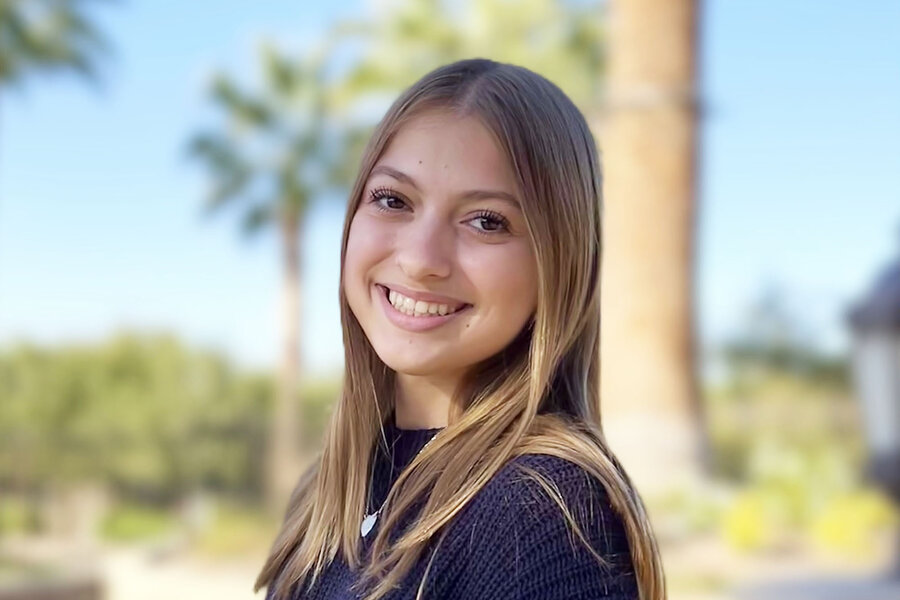FAFSA ‘train wreck’ rollout makes it harder to get to college. What went wrong?
Loading...
| Bakersfield, Calif.
A revamp of the Free Application for Federal Student Aid, or FAFSA, that was supposed to make securing government financial aid for college easier has done just the opposite. Delays, glitches, and new rules have left many U.S. students wondering where, and even if, they can enroll in college this fall. The setback may have serious consequences for those who need financial aid the most.
“This FAFSA rollout has been a train wreck,” says Robert Kelchen, head of the Department of Educational Leadership and Policy Studies at the University of Tennessee, Knoxville.
Why We Wrote This
The new FAFSA application will eventually be easier to complete. But the current process for federal student aid in the United States has stymied applicants, especially those from nontraditional homes.
FAFSA funding expands access to postsecondary education and provides work-study programs for students and government loans among other things. As the FAFSA program has grown, the students using it have become more diverse in terms of race, family income, and first-generation status.
“There are fewer people with the ability to pay for college out of pocket,” says Professor Kelchen. Partly as a result of the recent glitch, fewer students are seeking aid, and fewer still are likely to head back to school in the fall, say experts. Just over 38% of high school seniors had filled out a FAFSA application by May 1, compared with 60% last year.
Millions of prospective U.S. college students are scrambling to determine which school to attend in the fall, or whether to go at all. The hang-up? Federal student funding packages, supposed to arrive weeks – if not months – earlier, are still trickling in.
A revamp of the Free Application for Federal Student Aid, or FAFSA, that was supposed to make the lengthy process easier has done just the opposite. Repeated delays, technical glitches, and new requirements have combined for a frustrating process that experts say has undermined public confidence in access to higher education. It will have serious consequences, they say, for the students who need it most.
“This FAFSA rollout has been a train wreck,” says Robert Kelchen, head of the Department of Educational Leadership and Policy Studies at the University of Tennessee, Knoxville.
Why We Wrote This
The new FAFSA application will eventually be easier to complete. But the current process for federal student aid in the United States has stymied applicants, especially those from nontraditional homes.
FAFSA funding impacts the entire ecosystem of higher education. “This affects students. This affects colleges. It affects the states because they’re having to delay their financial aid to students as well,” Professor Kelchen says. “And it definitely does not help the public trust in higher education.”
What is FAFSA funding and who uses it?
The FAFSA program expands access to postsecondary education through a collection of financial tools. Funding is based on need and includes the Pell Grant, which now provides up to $7,395 per school year to low-income students. Federal aid also provides work-study programs for students and government-subsidized loans, which have flexible repayment programs based on the student’s income – and don’t begin until a student is out of school. Federal loans also qualify for federal forgiveness programs, like ones for certain teachers, health care professionals, or government employees.
As the FAFSA program has grown since the inception of federal student financial aid in 1965, so, too, has the type of students who use it: They’re more diverse in terms of race, family income, and first-generation status, explains Professor Kelchen. “And it’s not necessarily the FAFSA that’s causing that, but it’s just a more diverse group of young and middle-aged people. And there are fewer people with the ability to pay for college out of pocket,” he says.
A 2020 federal law triggered the new application, which is aimed at streamlining the notoriously complicated and time-consuming aid process and, in turn, encouraging more students to pursue college. The new form has fewer questions and links directly to the IRS to pull in parents’ tax information.
For most, the new application will, eventually, be easier to fill out. But the current process has thrown up hurdles to even straightforward applications – and is even trickier for students whose families vary from the two-parent, married-filing-jointly model.
How is the new FAFSA affecting students?
Far fewer students are applying for aid, which means fewer students will head back to school in the fall, say experts. Just over 38% of high school seniors had filled out a FAFSA application by May 3. Last year, it was nearly 60%, according to the National College Attainment Network, which helps connect students from all backgrounds to postsecondary schools.
Looking at total applicants, the gap is even bigger: On May 7, the Department of Education reported more than 9 million FAFSA submissions. Three years ago, it was 18 million.
The fact that there are fewer applicants makes sense, says Brendan Williams, a financial aid expert at uAspire, a nonprofit that works with students from underrepresented communities to access funding for college. With loan debt and the skyrocketing costs of higher education making headlines, students are reluctant to pursue more schooling if the cost is ambiguous.
“Would you buy a house without knowing the cost of things? Absolutely not. Would you buy a car without knowing the cost? Absolutely not,” Mr. Williams says, pointing out that the cost of college can rival that of a home. “[Students are] being asked to make a decision without knowing the cost, and choose between options for what, for many students, is a price-driven decision.”
When did the breakdown start and what are the deadlines now?
Application delays for the 2024-25 school year started last October, when the new FAFSA was supposed to launch. The opening of the online application portal was pushed back to the end of December and by mid-January was fully open. By late March, more than 1.5 million applications had been processed and relayed to schools, but a number of those had inaccurate aid estimates based on incomplete data. Students seeking help were met with difficult-to-reach customer service.
Meanwhile, schools – which use that FAFSA information to put together aid offers for students – pushed back the deadline for students to decide whether to attend. Normally that commitment deadline is May 1. Most colleges and universities now have a May 15 or June 1 deadline.
Audrey Weibe knows all too well the frustrations of waiting on this year’s FAFSA. The delays have the Bakersfield High School student thinking twice about her dream school, wondering if it will be worth the cost.
“It’s been stressful,” she says. “It kind of changed my perspective from, ‘This has been my dream school for the past two years’ ... into, ‘OK, should I go to a school where I know I’m guaranteed a scholarship just because I don’t know when the aid will come out?’”
For some of the highest-need applicants, just $500 could make all the difference, says Mr. Williams.
Are there pros as well as cons to the new FAFSA?
The new form is easier to navigate. “It is a lot simpler to fill out. It’s not as confusing,” says Ruthie Welborn, assistant director of financial aid at Bakersfield College. “So once they get everything smoothed out, I do think it will actually be simpler for a student.”
But it creates an equity issue for some students: The form requires both of an applicant’s parents to provide Social Security numbers, which has created problems for children of people living in the United States illegally – even though a parent’s citizenship status does not weigh on FAFSA eligibility. The new federal aid formula also does not take into account if families are paying for more than one student’s college tuition simultaneously.
A spokesperson for the Department of Education acknowledges the new FAFSA rollout has been problematic, but says students shouldn’t let that stop them from applying. “We appreciate your patience. And we will work to grow your trust,” he writes in an email. “Most of all – please, encourage your students to fill out the FAFSA. And in so doing, open doors to their dreams.”









